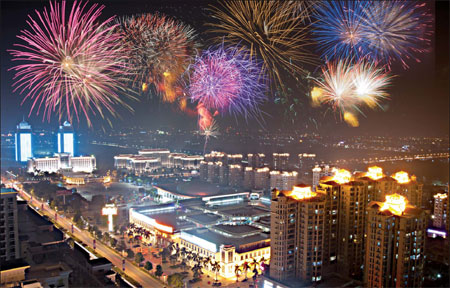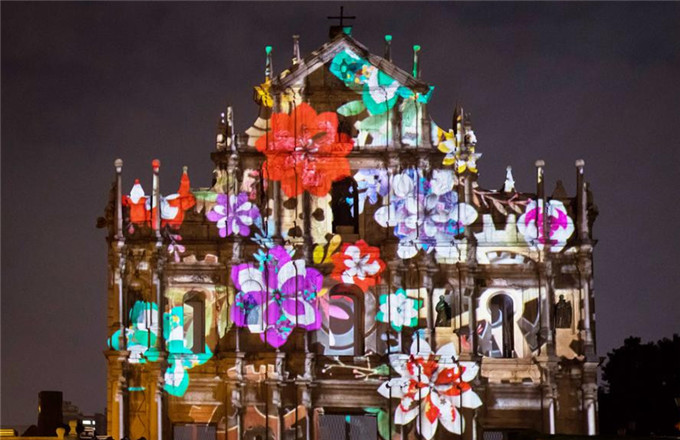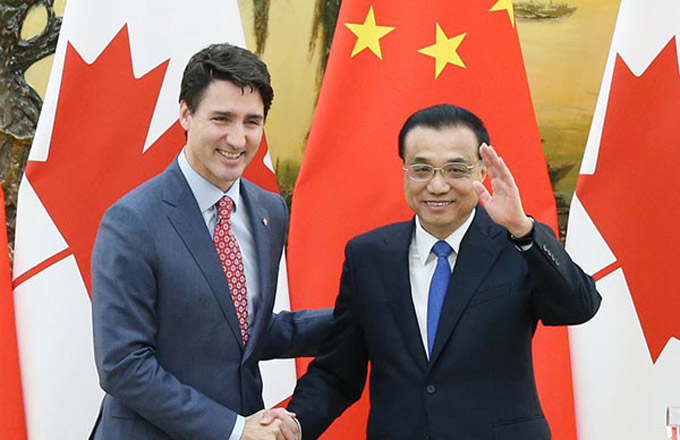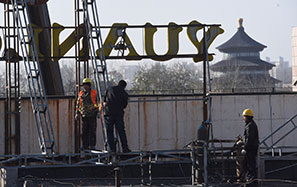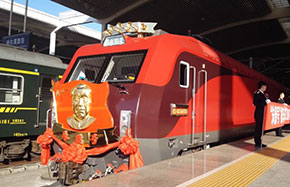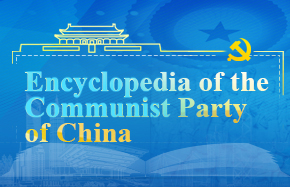Tricky switch to lighting a new world
Zhongshan is the brightest spot on China's industrial map, but there is a dark side as it tries to make the universal transition to new technology
The hand of fate is resting nervously on the dimmer switch of China's lighting industry, not sure which way it is going to turn. For some businesses, it will get brighter; for others, dark times may lie ahead.
As the shining center of the industry, Zhongshan in Guangdong province is where the changes will be reflected the most. In the city's Guzhen township, population 80,000, more than 4,000 companies are engaged in making and selling lighting products.
According to the local government, last year the output of "China's lighting capital" was 15.81 billion yuan ($2.6 billion; 1.9 billion euros), accounting for more than 60 percent of the country's lighting industry total.
Lighting products worth $480 million were shipped from Guzhen to more than 130 countries and regions in 2012, and exports have increased by 42 percent year-on-year to $213 million in the first half of this year, the local inspection and quarantine authority says.
But that is only half the story, and all is not as bright as it seems. In the past few years, many of Guzhen's lighting manufacturers and their 2,000 shops in the township have been switching over to LED products. In China and around the world, the much more energy-efficient and longer lasting light-emitting diode products are replacing traditional incandescent lighting, still the core of Guzhen's industry.
As part of a massive program to save energy and cut down on carbon emissions, and a continuing urbanization drive, by the end of its 12th Five-Year Plan (2011-15), the Chinese government wants 30 percent of domestic lighting to be LED, three times more than at present, and the Ministry of Science and Technology is on record as saying it plans to create a 500-billion-yuan LED industry in that time.
In doing so, tax breaks, subsidies and land deals have been offered and a reported 4,000 companies in China are now producing LED lights.
The problem is it is all happening very quickly and it is hard to see ahead clearly as that dimmer switch of fate wildly oscillates. Exciting, perhaps, but there will be casualties. Reuters reported earlier this year that 20 per cent of Chinese LED companies could be forced out of business.
The LED switchover in China is in a rush to catch up with and match advances made in Western countries in replacing traditional lighting and in technology.
The annual Guzhen International Lighting Fair only introduced a special exhibition area for LED lighting products in 2011. (That year there wasa huge rise in exports of Chinese LED products to Japan, following the Fukushima nuclear disaster. Since then, export volume has been declining.)
Guzhen's annual fair now focuses largely on LED applications. During this year's exhibition, which ended on Oct 21, more than 200 LED lighting companies, accounting for almost half of the exhibitors, showed off their latest products.
Lin Yuanchun, an engineering manager of Zhongshan Baolong Lighting Co, says vast demand in the LED market has caused many local traditional lighting manufacturers to shift their business focus.
With about 100 new lighting companies being set up each year in Guzhen, the town's head of local government, Wei Hongrui, says: "After more than two decades of development, we need to develop a lighting industry with low resources, low energy consumption but high economic value to sustain industrial growth.
"More local lighting companies have entered the LED market since we encouraged an industrial upgrading some years ago."
Wei says holding the annual lighting fair is a crucial part of the township's plans to become a global lighting hub, strongly competitive in marketing, technology and innovation against, or with, the likes of major foreign LED lighting manufacturers, such as Philips, General Electric and Osram.
"We expect the hub to take shape by the end of the 12th Five-Year Plan in 2015," Wei says, adding that by then Guzhen aims to realize an annual business turnover of more than 40 billion yuan, and hopefully have a couple of big national or international brands operating there, each capable of annual sales volumes above 5 billion yuan.
Wei attributes the glowing rise in the LED lighting industry in part to the Guangdong government's policy of promoting energy-saving lighting products in all uses across the province. By the end of the year, about 2 million traditional road lamps in the province should be replaced by LED ones.
Outdoor and commercial lighting is driving the LED industry for the time being, but Pan Wenbo, president of Guangzhou Guangya Exhibition & Trade Co, warns of gloomier scenarios.
Pan, whose company specializes in organizing lighting fairs, believes Guzhen's lighting enterprises will see a decline both in production and exports in the near future.
"China's fast urbanization requires more use of energy-saving lighting products," he says. "Under the current trend of emission reduction in commercial projects, the country will see a climax in LED lighting for public and commercial use, which then offers huge potential for domestic lighting manufacturers.
"As most chips, a core part used in LED products, are brought from overseas, the price of LED lighting is still relatively high for domestic use. I believe the price will go down over the next 10 years if more Chinese manufacturers strengthen their technology and innovation to develop their own chips."
Guzhen's LED lighting manufacturers, many of whom still rely heavily on labor-intensive manufacturing, should therefore boost investment in research and development if they are to sustain growth, or even survive, he says.
"They have made huge market profits in the past. But they will gradually lose the LED market if they don't boost investment in technology and design," Pan warns.
Like Zhongshan, other cities in the Pearl River Delta, such as Shenzhen, Dongguan, Zhuhai and Yangjiang, also host many lighting manufacturers, most of which have transferred to LED products.
"But most of the exports are far from technology-intensive or high-value added. They are still involved in labor-intensive manufacturing, especially those based in Guzhen," he says.
"And now, after years of development in the lighting industry, they are lacking land and labor resources, especially professional talent in the LED lighting industry."
LED lighting manufacturers need more land to build factories for business expansion, he says.
"But now, you see, Guzhen has a shortage of land. It cannot support business growth for local lighting industries.
"Guzhen does not enjoy advantages in land resources, professionals and preferential policies (offered in other parts of the country). That's why there are not many big LED lighting makers in the township."
Many lighting manufacturers in Guzhen were first established as family workshops, he says, and some have made little progress in industrial upgrading, he says.
"After they made money, some manufacturers in the township turned to the real estate market. They tended to invest more in property rather than in upgrading the lighting business."
Recognizing this challenge, Guzhen's local government has established a production promotion center to help train and introduce professionals in the LED sector, as well as provide intellectual property rights protection for local manufacturers.
The township also plans to build a lighting institute to develop expertise, and to organize an annual international lighting design competition to help boost local manufacturers' competitiveness in the global market.
"In the past, you would consider a Guzhen brand when you bought a lamp," Pan says. "But now you think of international brands when you buy a LED lighting product."
He has called on local businesses to learn more from leading domestic and international competitors about investment in technology and design.
Co-operation with the world's new LED buyers and designers will help lighting enterprises in Guzhen diversify their sales channels and boost competitiveness, Pan says, and international lighting fairs, such as the annual Guangzhou International Lighting Exhibition, will be crucial in that process.
"More importantly, leading international LED lighting manufacturers will show off their latest designs and technology at the fair, which will be helpful for domestic small and medium-sized enterprises to study."
qiuquanlin@chinadaily.com.cn
|
Guzhen is a veritable township of light, home to more than 4,000 companies engaged in making and selling lighting products. Qiu Quanlin / China Daily |




